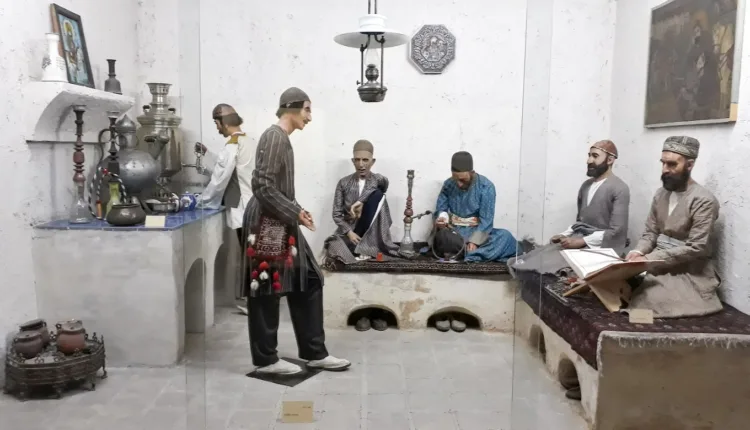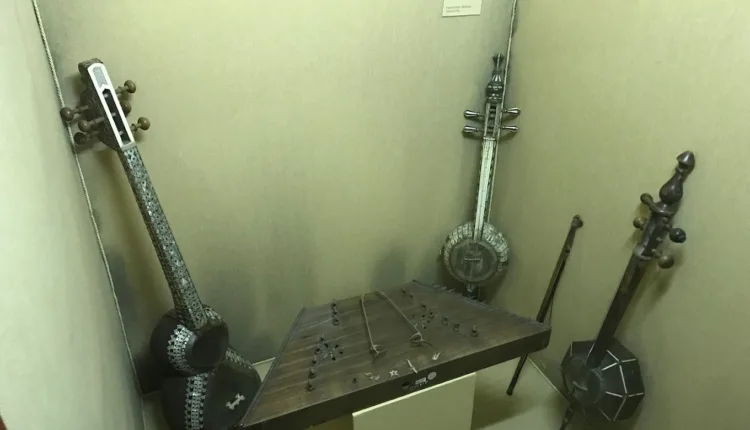Abyaz Palace in Tehran (Anthropology Museum)
Abyaz Palace: Tehran's Ethnological Museum
Located in the bustling heart of Tehran, Abyaz Palace, also known as the Ethnological Museum, is an architectural gem and cultural hotspot that gives a glimpse into Iran’s rich historical heritage at the Golestan Palace complex. Visiting this unique museum can transport you back to the Qajar era, showcasing the lifestyle, attire, and community gatherings of Iranian people during that period.
The Historical Abyaz Palace![]()
Constructed as part of the spectacular Golestan Palace complex, the Abyaz Palace was originally built to house valuable gifts given by the Ottoman Sultan to Nasir al-Din Shah of the Qajar Dynasty. Interestingly, the main hall’s dimensions are an exact match to the gifted rug from Sultan Abdul Hamid of the Ottoman Empire.
The architecture of the palace fuses 18th-century European palace designs with Islamic tilework and Qajar-style doors. Its exterior mirrors the style of 18th-century European palaces, boasting brick and tile decorations and a predominantly white facade. The inner facade of the palace is also entirely white and undecorated. Its internal staircase is crafted from white marble with honey and brown veins, lending the palace its name – ‘Abyaz,’ meaning ‘white.’
From 1934 onwards, during the rule of Reza Shah Pahlavi, the Abyaz Palace was used for government meetings. It underwent modifications in 1955 in preparation for the coronation ceremony of Mohammad Reza Shah Pahlavi. Since 1968, the palace has functioned as an ethnological museum.
A Peek into the Ethnological Museum
The museum showcases the lifestyle of the Iranian people during the Qajar era. It presents how people dressed, their gatherings around the ‘korsi’ (traditional low table with a heater underneath and blankets thrown over), coffeehouse scenes, and storytelling, among other aspects of life during that period.
Rules and Regulations
- Photography without flash, monopods, and tripods is allowed in the museum and interior parts of Golestan Palace.
- Backpacks, bulky items, and bags are not permitted inside Golestan Palace.
- Wheelchairs and baby strollers are only allowed in the outdoor area of Golestan Palace.
- Group visits require prior coordination.
- Discounts are available for retired military and national employees, families of war veterans, welfare members, individuals covered by the Relief Committee, and student group visits.
- Employees of the Cultural Heritage, Tourism, Handicrafts Department, and tour guides can visit the palace for free.
- Half-price tickets are not valid on Thursdays, Fridays, from March 15 to April 4, and on other official holidays.
Ticket Prices
- Entrance to Golestan Palace for domestic visitors: 5,000 Tomans
- Entrance to Golestan Palace for foreign visitors: 50,000 Tomans
- Entrance to Abyaz Palace for domestic visitors: 4,000 Tomans
- Entrance to Abyaz Palace for foreign visitors: 30,000 Tomans
Getting There
By Car: Golestan Palace is situated on 15 Khordad Street, adjacent to Arg Square. The entrance is through Davar Street.
By Metro: Using Metro Line 1, alight at 15 Khordad Station. After a five-minute walk towards Arg Square and entering Davar Street, you can spot the entrance to Golestan Palace.
The Abyaz Palace Ethnological Museum offers an exceptional journey through Iran’s historical and cultural past. A visit to this museum is like opening a book that narrates the tale of Iran’s glorious past, one not to be missed during your time in Tehran.
Abyaz Palace Contact information
Telephone: +98 21 33 11 33 35
Website: No website available





